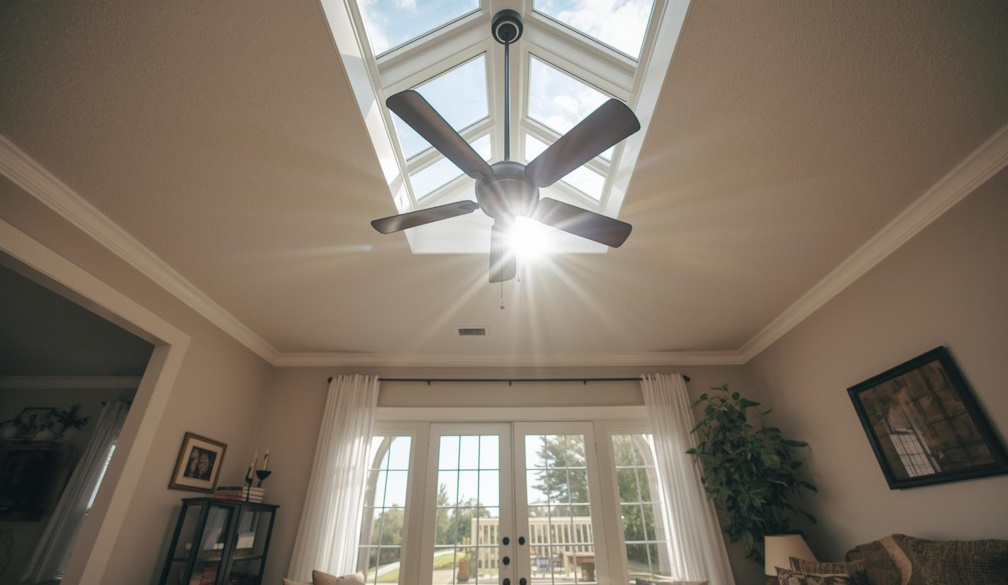Why Buy Ceiling Fans Online Is the Smart Choice for Modern Home Comfort
- Written by Daily Bulletin

Creating a comfortable indoor environment that balances airflow, style, and energy efficiency is a priority for many homeowners. Choosing to Buy ceiling fans Online has become an increasingly popular option because it allows buyers to explore a wider range of products while making informed decisions from the comfort of home. Online purchasing provides access to detailed product information, design variety, and performance comparisons that are often limited in physical retail stores.
How Buying Ceiling Fans Online Simplifies the Selection Process
When you buy ceiling fans online, it makes the ceiling fan selection process far more efficient. Instead of visiting multiple stores, buyers can browse extensive collections in one place. Product descriptions typically include specifications such as airflow capacity, motor type, blade span, and energy efficiency ratings. This level of detail allows homeowners to compare models easily and choose fans that suit specific room requirements and personal preferences.
Access to a Broader Range of Ceiling Fan Designs
One of the major advantages of buying ceiling fans online is access to a broader range of styles. Online retailers offer everything from minimalist contemporary designs to classic timber and industrial-inspired finishes. This variety makes it easier to find ceiling fans that complement interior décor rather than settling for limited in-store options. Design flexibility is especially valuable for homeowners renovating or furnishing new spaces.
Understanding Performance and Airflow Capabilities
Performance is a key factor when choosing a ceiling fan. Online listings usually provide clear airflow measurements, helping buyers understand how effectively a fan can circulate air in a given space. Strong airflow improves comfort by creating a cooling effect during warmer months and assisting with air circulation year-round. Being able to compare airflow specifications online supports better long-term satisfaction.
Energy Efficiency Benefits of Modern Ceiling Fans
Modern ceiling fans are designed to deliver effective airflow while consuming minimal electricity. Buying ceiling fans online allows homeowners to compare energy-efficient models and select options that support lower running costs. Ceiling fans can also be used alongside air conditioning systems to reduce reliance on cooling units, helping to manage energy usage and household expenses.
Choosing the Right Fan Size for Each Room
Room size plays an important role in ceiling fan effectiveness. Online retailers often provide size guides that help match blade span to room dimensions. Selecting the correct fan size ensures balanced airflow without overpowering smaller rooms or underperforming in larger spaces. These guides simplify decision-making and reduce the risk of incorrect purchases.
Ceiling Fans With Integrated Lighting Solutions
Many ceiling fans available online include integrated lighting, offering a practical solution for rooms that require both illumination and airflow. These dual-purpose fixtures are ideal for bedrooms, living areas, and spaces with limited ceiling capacity. Online product descriptions typically specify lighting type, brightness, and compatibility with dimmers, allowing buyers to choose models that meet both lighting and cooling needs.
Exploring Control Options and Smart Features
Online shopping makes it easier to explore ceiling fans with advanced control features. Many modern fans include remote controls, variable speed settings, and smart home compatibility. These features enhance convenience and usability, particularly in larger rooms or areas where wall controls are less accessible. Reviewing these options online helps buyers choose fans that align with their lifestyle.
Quality, Durability, and Warranty Transparency
Reputable online retailers provide clear information about materials, construction quality, and warranty coverage. Buyers can assess durability features such as motor type, blade balance, and finish resistance before making a purchase. Access to this information supports confident decision-making and reduces the likelihood of post-purchase dissatisfaction.
Customer Reviews and Real-World Insights
Online platforms often include customer reviews that offer valuable insights into real-world performance. Reviews can highlight factors such as noise levels, ease of installation, and long-term reliability. While individual experiences may vary, reviews provide an additional layer of information that complements technical specifications.
Delivery Convenience and Installation Planning
Buying ceiling fans online often includes delivery directly to the home, eliminating the need to transport bulky items. This convenience is particularly beneficial for larger fans or multi-room purchases. Some retailers also provide installation guidance or recommend professional installation services, helping buyers plan the full process from purchase to use.
Comparing Prices and Finding Better Value
Online shopping allows buyers to compare prices across multiple models and retailers quickly. This transparency supports better value selection, as buyers can balance cost against features and performance. Online-exclusive promotions or seasonal offers may also be available, helping homeowners maximise value without compromising quality.
Safety Standards and Compliance Awareness
Ceiling fans sold online are required to meet relevant safety and electrical standards. Product listings typically include compliance information, helping buyers ensure their selection is suitable for installation. Choosing compliant products protects both property and occupants while supporting long-term reliability.
Long-Term Comfort and Performance Benefits
High-quality ceiling fans deliver long-term comfort by improving airflow and temperature consistency. When selected carefully, ceiling fans require minimal maintenance and provide reliable performance for many years. Online purchasing supports better long-term outcomes by enabling informed and deliberate choices.
Why Online Ceiling Fan Purchasing Continues to Grow
The growing preference for buying ceiling fans online reflects changing consumer expectations. Convenience, variety, transparency, and access to detailed information make online platforms an attractive option. Homeowners can confidently select fans that meet both functional and aesthetic goals without the limitations of physical retail environments.
Enhancing Home Comfort Through Informed Online Choices
Buying ceiling fans online empowers homeowners to make decisions based on performance, design, and efficiency rather than availability alone. With careful selection, ceiling fans become a valuable addition that enhances comfort, supports energy efficiency, and complements interior spaces effectively.





